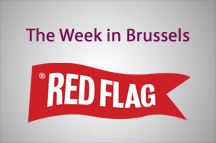 Reading the Brexit tea leaves has become something of a cottage industry in Brussels. Whether it is speculating whether David Davis will take the 08:52 or 10:56 train up from London or dissecting what exactly Donald Tusk might mean by “still much work to do”, no event is too small to attach great significance.
Reading the Brexit tea leaves has become something of a cottage industry in Brussels. Whether it is speculating whether David Davis will take the 08:52 or 10:56 train up from London or dissecting what exactly Donald Tusk might mean by “still much work to do”, no event is too small to attach great significance.
Occasionally, however, one sign seems especially prophetic; a signal appears in the noise, and the augurs of Brexit point as one to an omen of things to come.
We may have had one such moment this week, in the dispute which emerged over the question of citizens’ rights during the transitional phase. Theresa May said that free movement cannot continue during the transitional phase, and that the British people “did not vote for nothing to change.” The EU disagrees, with European Parliament Vice President Mairead McGuinness saying that May’s assertion contradicts what has already been agreed by the two sides in the first phase of negotiations.
This is important because it suggests a dynamic that is likely to play itself out again and again in the coming months. Many parts of the phase one agreement were left (one might say deliberately) vague, allowing for multiple interpretations. This means that the EU and UK are likely to interpret aspects of the agreement differently, leading to more of these conflicts in the future.
Nowhere is this more true than on the question of the Irish border. A stroke of what can only be considered linguistic trickery saved the deal at the eleventh hour in December, after the Northern Irish Democratic Unionist Party threatened to veto any deal that would introduce barriers to movement between the North and the rest of the UK.
It was obvious at the time that this could only happen either if the UK stayed inside the customs union, or if a hard border was introduced between Northern Ireland and the Republic of Ireland. The former was ruled out as a red line by the UK government; the latter by the Irish government. We therefore have three mutually incompatible positions, but an agreement that all three parties were supposedly happy with. How does this work again?
Quite simply, it doesn’t. Vague language at the end of phase one of the negotiations was used to fudge the issue, kicking it down the road. While this delivered an easy win for all sides in December, the real pain is still likely to come in the future, when someone won’t be getting what they want. Brexit divination is a dangerous game at the best of times, but more trouble to come seems like a safe prediction at this stage.














